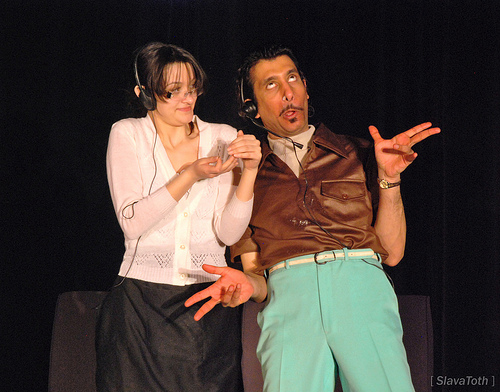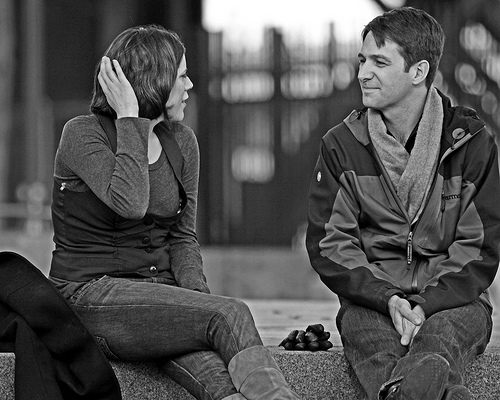 Body language is like a key to a hidden language: understanding it helps bring out another whole level of communication that isn’t normally visible to us, even though we sometimes react to it without knowing what’s driving our reaction. Of course, one of most the useful applications of understanding body language (as well as speech patterns and facial expressions) is detecting lies. This article offers ten ways to do that.
Body language is like a key to a hidden language: understanding it helps bring out another whole level of communication that isn’t normally visible to us, even though we sometimes react to it without knowing what’s driving our reaction. Of course, one of most the useful applications of understanding body language (as well as speech patterns and facial expressions) is detecting lies. This article offers ten ways to do that.
Unfortunately, body language isn’t as simple as one position or gesture always meaning one thing, but it can provide strong clues to what other people are thinking. Multiple clues taken together can provide a clearer and more definite picture of what’s going on in another person’s mind, especially when we take speech and facial expressions into account.
Sometimes when we hold something back or are feeling anxious, we act as though we’re lying even when we aren’t–so lie detection can sometimes mean just detecting that there’s something hidden, even if the words being spoken are true.
Here are ten indications that someone may be lying:
1. The nose touch. When we lie, we have a built-in urge to cover our mouths. However, most of us naturally learn to curb this at a young age because it’s such a clear giveaway. The urge is still there, though, and so the movement often turns into touching the nose or another part of the face.
2. Repetitions and hesitations. When we lie, we are more likely to hem and haw, and also more likely to say something more than once or with more emphasis than it requires.
3. Crossed ankles. This one usually happens when someone is sitting, and it tends to mean that something is being held back or hidden.
4. Looking to the left. When we remember, we’re more likely to look to the right; when we’re making things up, we’re more likely to look to the left.
5. Touching the back of the neck. As funny as it is to hear, touching the back of the neck is often an unintended signal that someone or something is “a pain in the neck.” This move may happen when an unwanted question is asked, or when dealing with something the person considers a nuisance.
6. The mouth smiles, but the eyes don’t. Telling real smiles from fake smiles isn’t always easy, but one of the bigger giveaways is that the mouth may change shape while the eyes don’t move. Real smiles usually include crinkles around the eyes. (See “How to Tell a Real Smile from a Fake Smile.”)
7. The lopsided smile. Real smiles are usually made with the whole mouth. If a smile is lopsided, it’s often not completely sincere.
8. A flash of worry. A “microexpression” is a very brief facial expression that occurs without the person intending or generally even knowing it has happened. A worried or angry microexpression that’s replaced by a happier look can indicate a lie.
9. The mouth says yes, but the head says no. When a person is saying something positive but accompanying it by shaking the head, that’s often a signal that they don’t believe what they’re saying. If the statement is negative, though (for instance “I am not interested”), then a head shake is a natural way to emphasize and confirm.
10. Freezing up. When we lie, we tend to have trouble reacting the way we normally would, and we stop using our normal gestures and maintaining a comfortable person-to-person body relationship. A person who’s lying will usually be more physically awkward and less physically expressive. That’s not surprising: deep down, we know our bodies can give us away, and we may try to shut them down.
If you’re interested in body language, you might like to read some of my previous posts on the subject, which include





